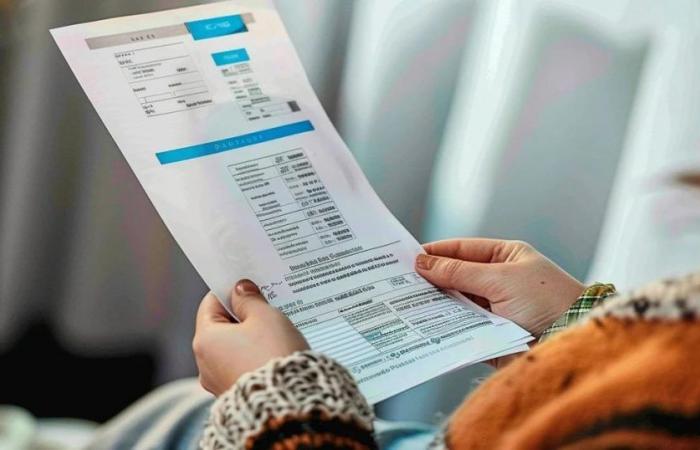In June, the new tariff tables began to take effect with the removal of subsidies that the Government applied to public services, especially energy, with an impact on generation prices, which were added to the increases in the first quarter in both transportation and in distribution.
Private surveys showed that the average bills that will begin to arrive from July will reflect strong increases compared to those at the beginning of the year: greater than 400% in the case of electricity and greater than 1,000% for natural gas through networks. The impact will be greater in middle and low-income sectors, due to the removal of subsidies and greater seasonal consumption with a winter that was significantly anticipated.
It should be noted that energy services are divided into three residential categories based on the income levels they receive according to the segmentation scheme in force since 2022: those with high incomes (N1) were expected to pay more for energy. Those with low incomes (N2) and those with medium incomes (N3) have “rebates on their rates” but with a consumption cap.
The average electricity bill for a N2 user (low income) was estimated at $35,308, and for a N3 user (medium income) at $39,488 per month.
The latest official data show that the N1 strip includes 5.3 million homes; the N2 to 8 million and the N3 to 2.7 million families. The categorization depends on the income that each household receives with respect to the Total Basic Basket (CBT) of Indec.
The Rates and Subsidies Observatory at the Interdisciplinary Institute of Political Economy (IIEP), which depends on the UBA and Conicet, estimated that since June an N1 user faces a rate increase of 922% compared to the table in force in December 2023 and an increase of 130% compared to April.
In turn, low-income users No. 2 and medium-income users No. 3 face, on average, final bills with increases of 1,475% and 1,420% since the start of the new government and 173% higher than those of April, respectively.
With the new values, the IIEP detailed that the country’s average bill in June for an N1 user, corresponding to high-income households, is $49,551 per month.
Low-income No. 2 and medium-income gas users No. 2 face, on average, final bills with increases of 1,475% and 1,420% since the start of the new government and 173% higher than those of April
Meanwhile, the average ticket for an N2 user is $35,308, and for an N3 user it rises to $39,488 per month.
A work by the consulting firms Economía y Energía and PxQ highlighted that “The increases in electrical energy in the metropolitan region of Buenos Aires (AMBA) would be 228% for the N1, 465% for the N2 and 378% for the N3,” compared to the values closing of the previous year.
In detail, the average electricity bills that high-income households will receive in the coming months will be almost $35,000 per month.
In the case of low-income users, it is estimated that it will rise to the range of $22,000 per month, while for the middle class it will rise to more than $26,000, according to the estimates of the consulting firms in question.
The Minister of Economy, Luis Caputocommitted to the International Monetary Fund (IMF) to advance new increases in electricity, gas, transportation and fuel to achieve the objective of zero fiscal deficit, in the face of possible delays or eventual failure of the fiscal package promoted by the ruling party in the Congress.
This contingency plan was made explicit by the Economy team in the staff report that the IMF published in the last week, after the approval of the eighth review of the Argentine program. The projects with which Caputo hopes not to harshen the adjustment that he is carrying out, approved in Deputies, you had some missteps in the Senate last week.
From the staff report it is clear that the Treasury Palace plans a reduction in energy subsidies of at least 0.7 percentage points of GDP in 2024, of which 0.5 pp of GDP would have already been cut. The annual objective is 0.2 points higher than the initial roadmap. The result was mainly explained by lower international energy prices, lower import needs due to the operation of the Néstor Kirchner Gasduct and the deferral of a debt bond held by Cammesa. with electricity generators and gas producers.
The Ministry of Economy plans to reduce energy subsidies by at least 0.7 percentage points of GDP in 2024, of which 0.5 pp of GDP would have already been cut
The consulting firm Economía y Energía detailed that spending on subsidies should fall in 2024 by the equivalent of USD 4,683 million to achieve a reduction of 0.7 points of GDP and end at USD 5,000 million, that is, 0.8 pp of GDP. According to these calculations, in 2023 the item had totaled USD 9,683 million, equivalent to 1.5 points of GDP.
“The next adjustments are expected after August,” the IMF document says.
In parallel, Economía expects a reduction in urban transportation subsidies of 0.1 percentage point of GDP by 2024 when at the beginning of the year it projected a drop of 0.2 points of GDP.
Although the Ministry of Transportation analyzes the next increases, the inflation update that contemplates the possibility of increases of up to 71.9% according to the accumulated Indec Consumer Price Index (CPI) until May remains suspended.
“Transfers to the state water company (AySA) are also being reduced, in line with the projected increase in its service rates according to the new indexation formula,” the document stated.
In July, an update of the Fuel Transfer Tax, a tax due to inflation, is planned, which would imply an increase in gasoline and diesel of at least 18% in the final price.
Another of the items that Minister Luis Caputo can touch upon in the event of a possible bad step in Congress in his fiscal chapter is that of the tax on liquid fuels (ICL). An update of the inflation tax is planned in July that would imply an increase in gasoline and diesel of at least 18% in the final price at the pumps.
In any case, the minister analyzes the best “timing” to apply the increase, so it is not ruled out that the market decides on a new deferral, as in April and May, pending the consolidation of the real increase in the income of the population, and given the slack that has been achieved until May in the result of public finances.






